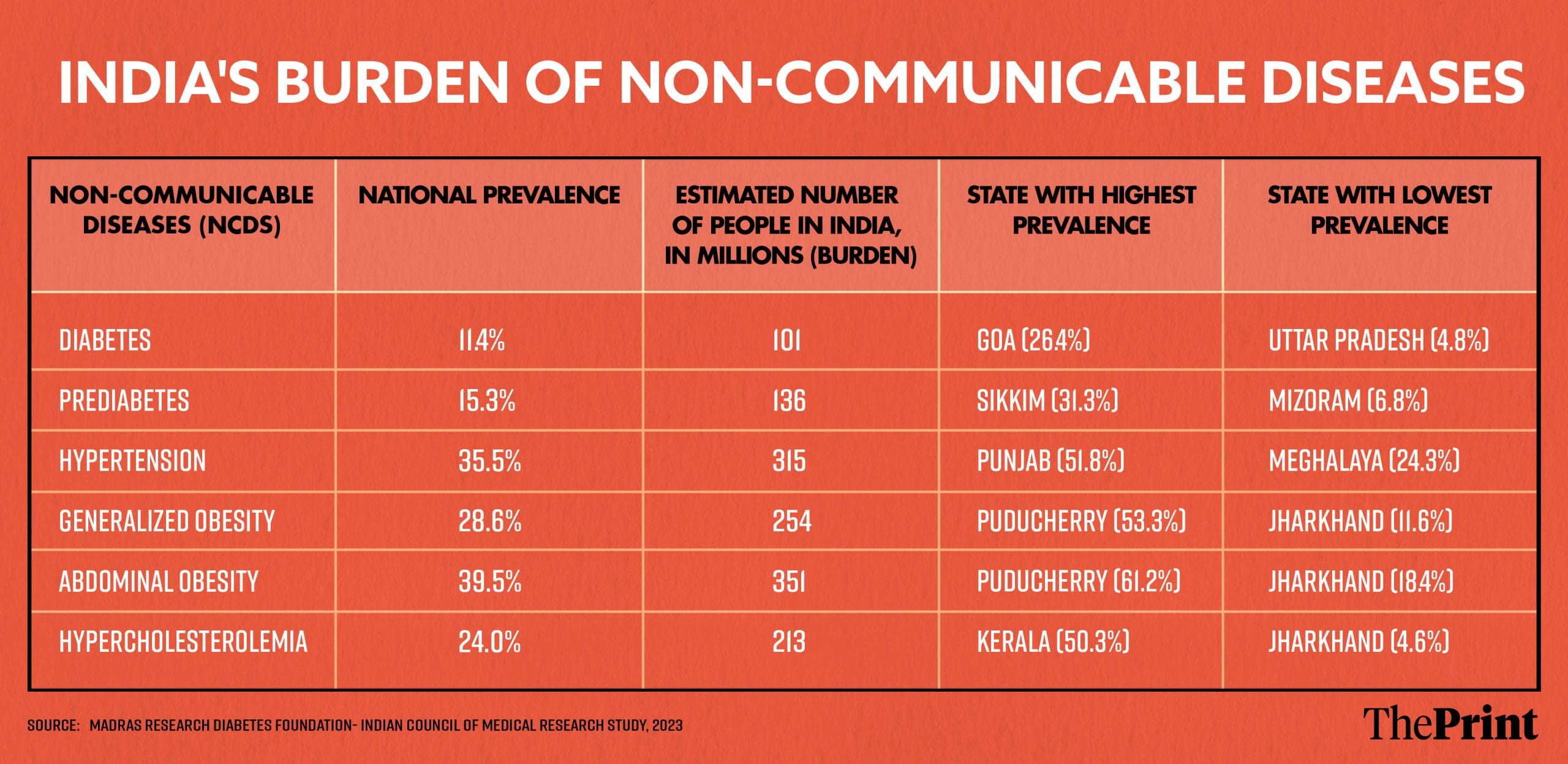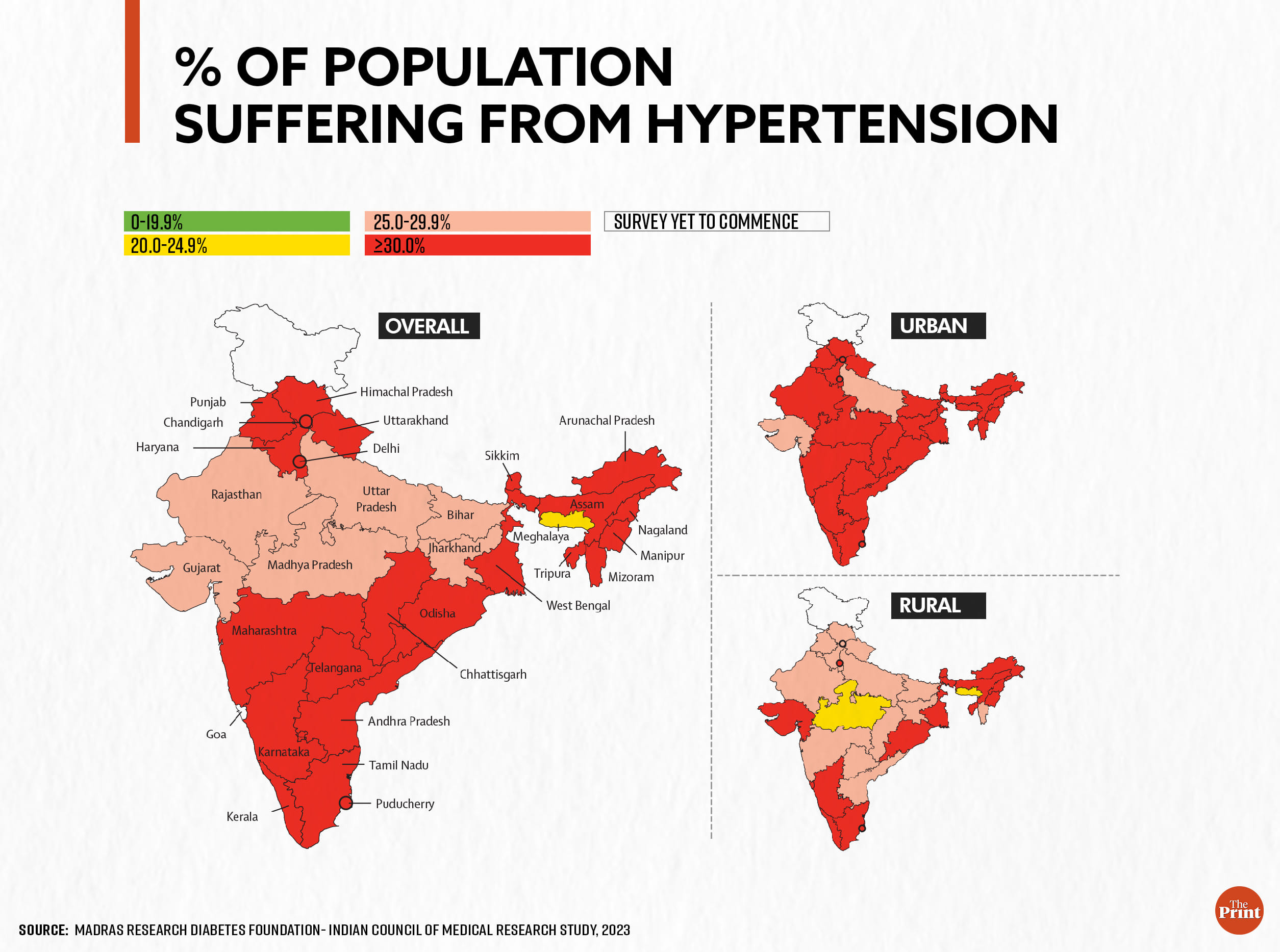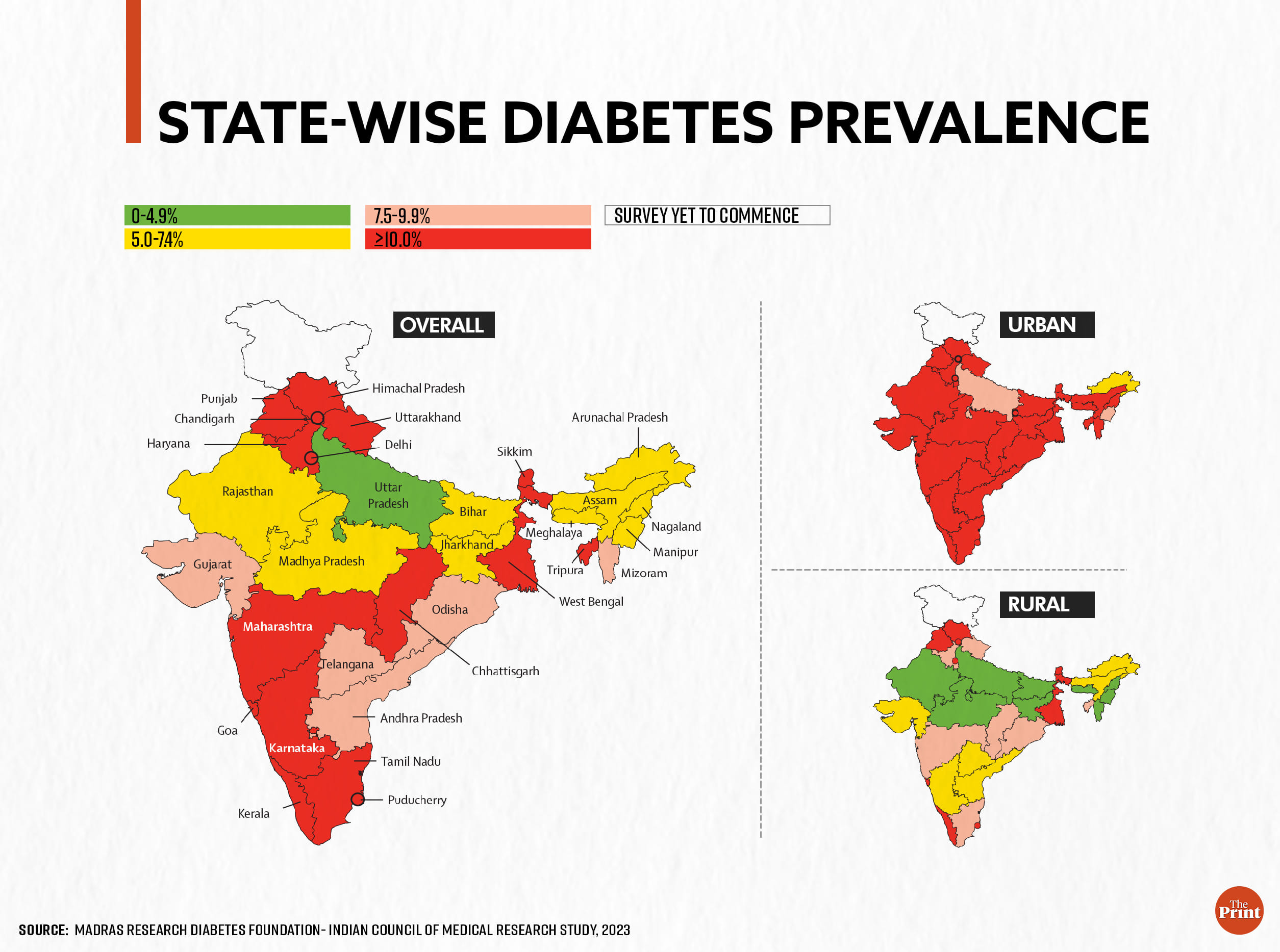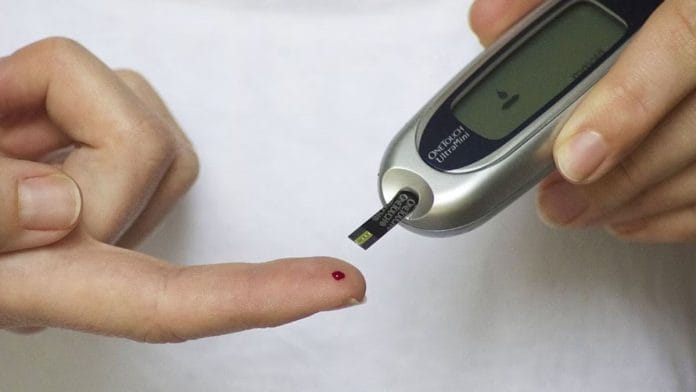New Delhi: A ground-breaking report assessing the burden of non-communicable diseases (NCD) across Indian states has found that the national prevalence of diabetes in India is 11.4 per cent, while 35.5 per cent of Indians suffer from hypertension. The study is touted to be the “first comprehensive study, covering all states of India” to assess the NCD burden in the country.
The findings of the study, conducted by the Madras Diabetes Research Foundation in collaboration with the Indian Council of Medical Research (ICMR) and the Union health ministry, were published in journal, The Lancet Diabetes & Endocrinology Thursday.
The study, titled Metabolic non-communicable health report of India-the ICMR-INDIAB National Cross-sectional Study also found that the prevalence of generalised obesity and abdominal obesity in India stood at 28.6 and 39.5 per cent, respectively.
Moreover, it showed that 24 per cent of Indians suffer from hypercholesterolemia — a condition in which fat collects in arteries and puts individuals at greater risk of heart attack and strokes — while 15.3 per cent of people have pre-diabetes.
When extrapolated for exact numbers, it is estimated that in 2021, there were 101 million people in India with diabetes and 136 million with prediabetes, while 315 million people had high blood pressure, 254 million had generalised obesity, and 351 million had abdominal obesity.
Additionally, 213 million people in the country had hypercholesterolaemia.

The results are based on surveying 1,13,043 people (33,537 urban and 79,506 rural residents), in 31 states and Union Territories in the country, between 2008 and 2020.
“These findings should work as a major reminder for the governments about the exponentially growing problem of NCDs in states and something should be done urgently to address the challenge,” said Dr R. M. Anjana, lead researcher associated with the project, while launching the report Thursday.
According to Dr V. Mohan, a senior author of the study, state governments in India, which are primarily in charge of providing healthcare in their respective regions, are likely to be especially interested in the detailed state-level data on NCDs, as it will allow them to develop evidence-based interventions to successfully halt the progression of NCDs and manage their complications.
In the study, researchers noted that the prevalence of diabetes and other metabolic NCDs in India is considerably higher than previously estimated.
The National Family Health Survey-5 for the 2019 to 2021 period, for instance, showed that 21 per cent of women aged over 15 years had hypertension, compared to 24 per cent of men in the same age group. The same survey had shown that 6.4 per cent of women aged 15-49 years were obese, while 4 per cent of men in that age group had the condition.
Data shared by the World Health Organisation meanwhile suggests that 77 million people in India have diabetes.
“While the diabetes epidemic is stabilising in the more developed states of the country, it is still increasing in most other states,” researchers said in the paper. “Thus, there are serious implications for the nation, warranting urgent state-specific policies and interventions to arrest the rapidly rising epidemic of metabolic NCDs in India”.
Dr R.S. Dhaliwal, head, NCD division of the ICMR pointed out in a statement that it is quite evident from the study results that India has a substantial population at risk of cardiovascular disease and other long-term organ complications due to metabolic NCDs.
Also read: Indians are growing fatter, and the problem is biggest for wealthy women, shows NFHS data
Wide differences between states
According to the study results, urban regions were found to have higher rates of almost all metabolic NCDs compared to rural areas. There were also wide differences in the prevalence of NCDs between states.
For instance, 51.8 per cent of the people surveyed in Punjab had hypertension, while the prevalence was 24.3 per cent in Meghalaya. Similarly, 26.4 per cent of Goans had diabetes while the condition was diagnosed in only 4.8 per cent people in the most populous state of the country, Uttar Pradesh.

When it came to obesity, while 53 per cent of people in Puducherry were found to be suffering from it, just 11.6 per cent people in Jharkhand had the condition.
While the diabetes epidemic seems to have peaked in some of the more developed states, most of the less developed states are still in the initial take-off phase, said the researchers.

The report has also found that the prevalence of other cardiometabolic risk factors such as obesity, hypertension, and dyslipidemia (imbalance of lipids) is uniformly high across the country, particularly in the urban areas.
The focus should therefore be on implementing interventions to minimise the progression of prediabetes to diabetes in states where the diabetes epidemic has yet to peak, and providing optimal care to ensure comprehensive risk factor reduction in individuals with diabetes so as to prevent complications in those states where the epidemic has already stabilised, the authors stressed.
(Edited by Poulomi Banerjee)
Also read: India considers policy on non-sugar sweeteners after WHO guidelines caution against adverse effects






